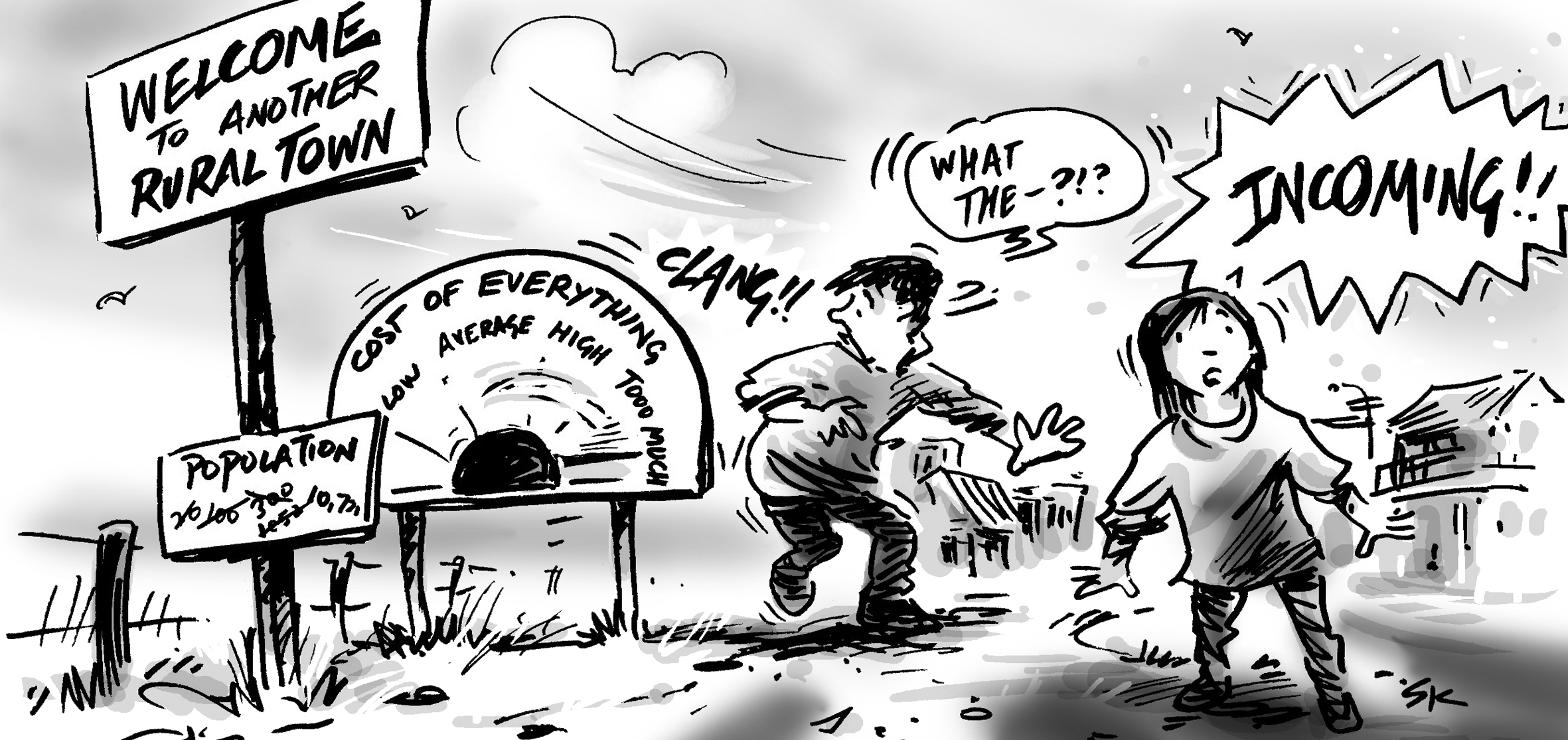Is your council taking advantage of State and Federal grant opportunities? Nenad uses the current Thriving Suburbs Program as an example to demonstrate how councils can use .id tools to support grant applications.
Local Government’s revenue-raising capacity is a fraught subject
.id (informed decisions) works with local governments across the country, creating local-areas insights as the evidence base for a plethora of decisions. Local governments' proximity to everyday lives means the decisions they make can have an immediate impact. Planning for growing, changing communities, and delivering the services they need, is the core business of local government.
Most decisions made require funding. Council revenue predominantly comes from rates, user charges, and grants from federal and State / Territory governments.
Own-source revenue-raising capacity through rates and user charges is constrained for most councils. Many rural councils have small populations, whereas developing and upgrading facilities and infrastructure often fail to keep pace in high-growth councils. Rate rises are unpopular and often tough on the elderly, who can be asset-rich and cash-poor. Rate capping can be a further restriction (e.g. NSW has had rate pegging in place since 1977) while state or federal government cost-shifting squeezes revenue further. User charges are fair but must be siloed and can burden families.
Grants are an increasingly crucial revenue source for councils, making an active grant application program a necessity for every Australian council. In the past we've written about resources available to help prepare competitive grant applications and even created a step-by-step grant application guide.
Grant applications are not for the faint-hearted...
Grant applications are fiercely competitive, with funding awarded on a merit basis. The application process is a battleground where only the most agile and dogged emerge victorious. (Clearly, the recent Olympics have affected this writer!) The Thriving Suburbs Program is a prime example of this. It's a one-shot opportunity for urban, suburban and peri-urban councils, offering a chance to claim a slice of a freshly baked $350-million pie.
But here's the catch … time is running out! The deadline for applications for the Thriving Suburbs Program is 28 August. This is a significant opportunity for qualifying councils, but it's a race against the clock. The work is substantial, and there's no time to waste. Sound familiar?
Success in grant applications depends on a clear, concise and evidence-based framework. The assessment criteria must be responded to with a data-led story that reveals the full challenge. This is where the .id suite of tools used by LGA across Australia come into their own.
How can .id tools assist?
Community Profile | profile.id tells the socio-demographic story of your council at a small area level and provides a history of change, highlighting whether there are sociodemographic needs or vulnerabilities present in your municipality, higher than those in your region.
Social Atlas | atlas.id captures the distribution of population groups (e.g. students, public transport users, the elderly, families with children) in thematic maps at SA1 level. Need a variety of sociodemographic information about a bespoke catchment/activity centre/area within your LGA? Social Atlas can help. We've written in the past about using the Social Atlas to identify vulnerable communities.
Population Forecast | forecast.id includes a 25-year forecast that identifies what is driving population change in specific neighbourhoods and how population, the age structure and residential development patterns will change now and in the future. Will your future population be older, younger? What needs and challenges come with that?
Economic Profile | economy.id is the most accurate local-area economic modelling tool in Australia. Tell the story of your local economy and how it is changing. We've helped Councils use economy.id in many grant/funding applications, such as Kempsey Shire Council receiving a $2m grant from the National Stronger Regions Fund for development of a cinema complex in the Kempsey CBD.
Housing Monitor | housing.id combines demographic, economic and forecast data with regularly updated local housing and rental data to allow Council to advocate for your community’s housing and track change in response to strategic goals. The Housing Monitor has been used to inform Housing Strategies and advocacy efforts by LGAs around Australia.
Community Views | views.id captures a community’s perspective of liveability in their local area: what they value and how they rate their lived experience, covering a range of areas including safety, housing, transport, health and climate change. The tool is a powerful qualitative addition of statistically significant, robust data about your residents' values, needs and experiences, and adds a much-needed human component to describe the need for community services or infrastructure.
.id tools can help with assessment criteria of the "Thriving Suburbs Program"
"A demonstration of how a project will contribute to social and community inclusion."

- Describe the demographics of the community at large or a community of interest. Does the project focus on younger people? The aged population? People with health and disability challenges? How big are those populations, and where are they located? How are they changing over time? Are the trends in your LGA more pronounced than elsewhere in your region?
- The size of these populations also supports an argument for how much a project helps a community.
All .id tools can be leveraged to tell this story. .id tools excel in showing sub-LGA diversity and how communities differ, helping identify where certain infrastructure should be prioritised (e.g., building playgrounds where needed and more elderly-friendly footpaths where needed). Our population forecasts can help identify where current infrastructure may require expansion, or when additional infrastructure projects make sense to build or invest in.
"Councils must describe the project benefits in relation to liveability and enhanced amenity"

- Your community’s perspectives of liveability is a starting point to demonstrate need (see views.id)
- The forecasted population which helps describe the size of the challenge in many cases, is also useful to show what the future holds (see forecast.id).
- .economy.id has tools to measure the economic impact of community infrastructure projects (e.g. increasing the number of jobs, plus direct and indirect opportunities).
- Projecting long-term improvements in liveability and amenity can be further modelled and researched by our consulting experts.
"The social benefits of a project must also be proven"

Social benefits are dependent on the proposed project. At the very least, the project can demonstrate it is targeting vulnerable populations and research theory can argue for potential gains. For example, if the project is focussing on public transport, then the benefits will cover a wide gambit of social gains.
- Public safety and decreased pressure on transport infrastructure such as roads (getting people out of cars and into safer forms of transport such as buses or trains),
- Growing the economy (research shows that public transport triggers direct economic activity or makes employment hubs more accessible, and
- A well-developed public transport encourages economic development and relieves congestion.
- As a social service, public transport makes amenities more accessible for vulnerable populations, but it also benefits the wider population by relieving congestion and improving property prices.
Talk to us about your grant or funding application/s
These were just a few examples of the right local evidence base can help in grant application – and we only looked at the first tranche of criteria in the Thriving Suburbs program. We believe that grant funding is a major and ongoing opportunity for Local Government in Australia, and no single approach fits all councils or grants. It is a process of continuous improvement. Being equipped with objective, proven and accurate information helps your case and also helps you identify real trends and needs in your communities.
If you work in Council and are looking for support in winning funding:
If you've used .id tools for grant and funding applications, we'd love to hear your story and experience.












